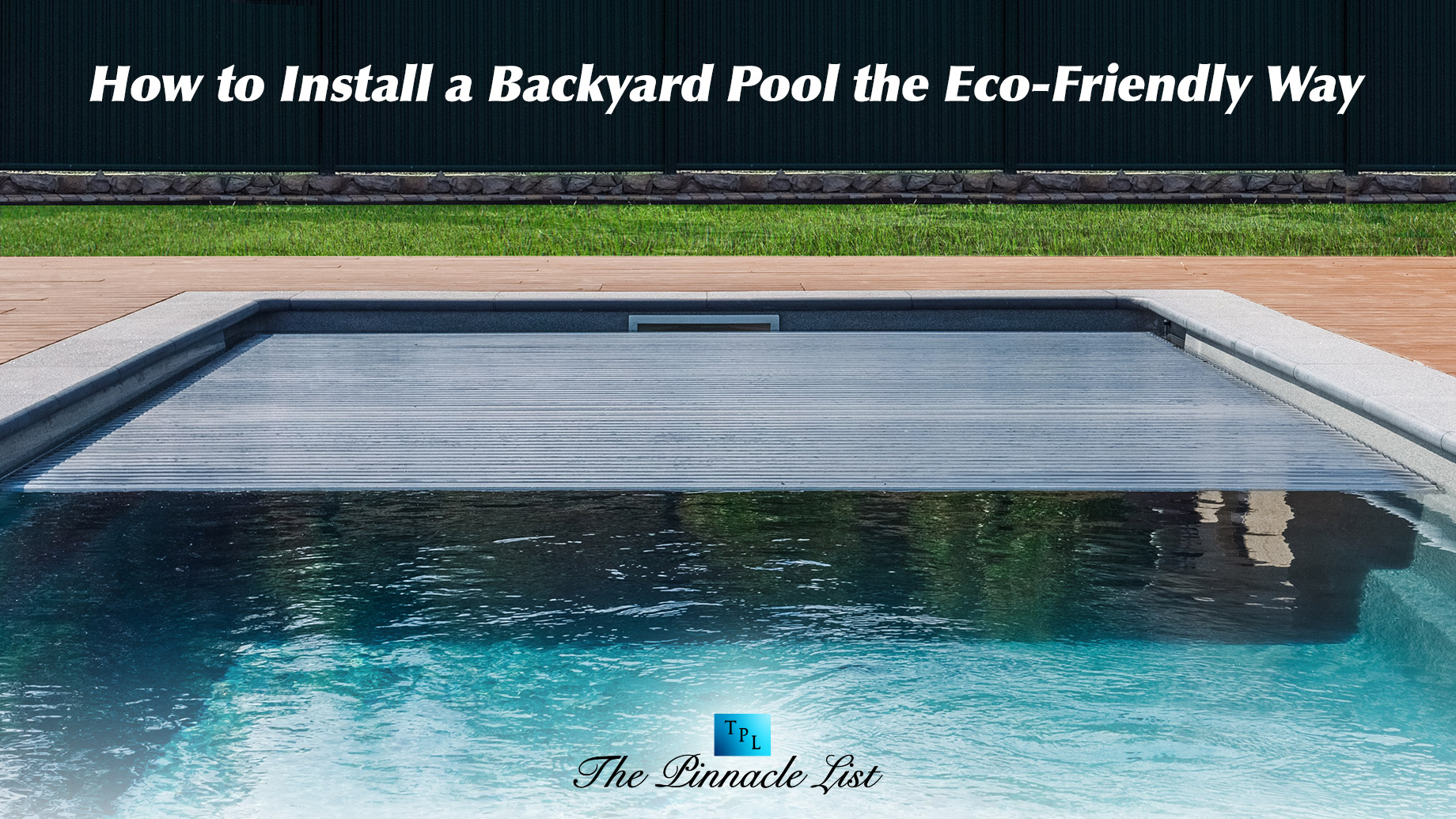
Swimming pools are becoming more than places to hang out and splash about. For many families, the pool is ingrained into their lifestyles, especially for those living in sunny climates.
Global Sources says the swimming pool industry is experiencing an innovative spurt, thanks to cutting-edge technology and intelligent design. One continuous trend is sustainability.
Many people are turning to eco-friendly solutions as they become more mindful of their consumption and how it affects the environment. Sustainability is no longer a buzzword but a call to action.
Below, we’ll explain how to install a pool with an eco-friendly frame of mind.
Fiberglass or Concrete?
Because of their low energy consumption over time, fiberglass pools have a smaller carbon footprint when compared to their concrete counterparts.
Fiberglass pools require fewer chemicals to maintain water quality due to the smooth, non-porous surface, making them more resistant to algae buildup. Fewer chemicals means you’re significantly reducing the impact on the environment.
When doing your initial homework, request quotes from fiberglass pool installers who have tons of experience and come highly recommended. They can advise which size and design will work better in your yard or garden.
Fiberglass pools are compatible with eco-friendly sanitization systems like saltwater chlorination and ozone generators. They also offer great value and peace of mind, lasting longer than other pool types.
Concrete pools don’t have the same versatility or lifespan.
Resistance to cracks, leaks and fading minimizes the need for a replacement while contributing to conserving resources.
Stefano’s Landscaping suggests installing a pool that is expertly manufactured and backed with a lifetime warranty.
Types of Eco-Friendly Pools
Eco-friendly pools are meant to lessen their impact on the environment by utilizing less energy and water and fewer chemicals. The type of pool you decide on makes a huge difference.
Natural Pool
Natural swimming pools have gained quite a following in the past decade.
Homeowners who want their pools to blend with the surrounding natural environment tend to go with this type.
The Spruce describes natural pools as using plant life to maintain the water quality instead of chemicals.
Because plants are responsible for the pH balance, installing a natural pool can be more expensive with a section of the pool dedicated just for water filtration.
Saltwater Pool
Traditionally, chlorine is used to clean the pool. But the harsh chemical is toxic and corrosive. If your family is prone to sensitive skin conditions, you should avoid it altogether.
Chlorine is a no-go zone for several reasons, including being harmful to the environment during production and transport.
Saltwater pools employ electrolysis to keep the water clear, reducing the need to add chemicals. Invest in a variable-speed pump and purchase high-quality salt for your saltwater pool to run efficiently.
The only drawback is that salt is corrosive and can damage metal over time.
Bio Pool
A bio pool is a natural artificial pool separated from the ground by an impermeable layer. Think of it as a mashup between a lake and a traditional pool.
The natural, chemical-free water treatment process makes bio pools popular for homeowners wanting a body of water in harmony with its environment.
A combination of plants, mechanical filters, phosphates and other biological elements treats the water. The entire process is completely chemical-free, greatly reducing the ecological impact.
The beauty of natural swimming ponds is that, when designed properly, they appear to be part of the landscape. When added to green spaces, they can further elevate their surroundings.
Green Technology
Environmentally friendly water filtration systems are fast joining the green evolution.
Salt chlorinators, ultraviolet radiation and active oxygen are some technological advancements making waves.
A fairly new innovation, neolysis combines salt electrolysis technology with ultraviolet radiation for an efficient and sustainable water treatment and disinfection process.
Splashing Out

Inground pools can be costly. Most people spend between $44,293 and $86,401 depending on design, materials, size and features.
Factor in solar heating and that could set you back another $2,000. While considering the above, pool maintenance should also be budgeted for.
Despite the costs, installing a pool is an investment in your family spending more time together. It increases the value of your home and by using eco-friendly practices, you become an active participant in reducing your property’s carbon footprint.
The pool industry has expanded at such an extraordinary rate that sustainability is the cornerstone of many new projects.
When taking the leap to installing an eco-friendly pool, do your research, employ a reputable pool company, and decide which type will suit your outdoor space and family’s needs.
Let’s not forget about the health benefits. Eco-friendly pools prevent skin, mucous membranes and eye irritations. They are ideal for people with atopic skin or other dermatological problems.